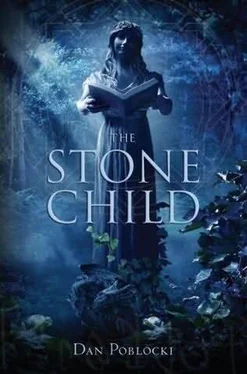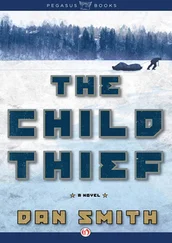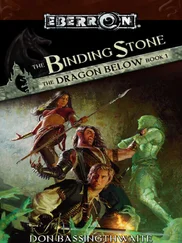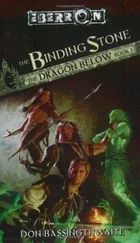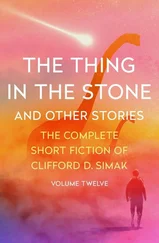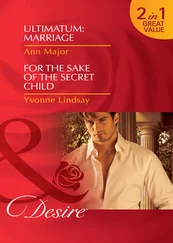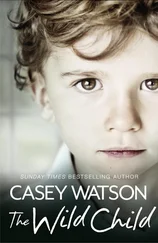“ Are you suggesting that this is the same ‘key’?” I asked my friend incredulously. “That I own the ‘key’ to the gates of Eden? ”
“ A fake, of course,” my friend told me, amused. “A replica. According to the descriptions I’ve read in several other texts, yours certainly fits the legend. What a strange souvenir! ”
At the time, I was not sure what I believed. According to the article my friend had provided, academics were interested in the stories people invented in order to make sense of their lives. This I understood. The myth of the Garden of Eden, the theory of the Big Bang, every single “once upon a time” you ever heard when your parents tucked you into bed-these help us imagine our own personal world. And wasn’t that the job of the writer? To create worlds? To invent myths? I’d finally found a topic about which I was excited. I was so interested in these theories that I studied as much as I could about my mysterious souvenir “key.” One day, I found a comprehensive article about “the real thing” in a book called The Myth of the Stone Children.
As Eddie read what he’d translated, he gasped. The Myth of the Stone Children? He thought of the statue in the Nameless Woods-she was a “stone child,” wasn’t she? Did the statue have something to do with Nathaniel’s experience in Europe? Finally, something was starting to make sense!
Glancing outside, Eddie noticed the sky quickly fading to night. Many of the leaves had fallen from the trees, so the bare branches were left in silhouette against the deep blue. They looked like bones clawing up from the earth. He licked his lips and got back to work.
The central mythology of the stone children was similar to many of the Judeo-Christian beliefs Nathaniel was familiar with-but there were also quite a few differences. According to the text he had found, some people believed that God created the world in seven days. When He was done, there existed a place called Eden -an enormous garden surrounded by a tall circular wall that protected the paradise from the yet unforged, darker realms. On either side of an ornate entrance stood two statues. Two stone children. One boy and one girl. The pedestals on which the children perched were intricately decorated with signs and symbols of the creatures who were to be kept out of paradise. Each child held a large blank book, marked by one of two Hebrew letters carved onto its cover-Yod on one book; Chet on the other.

Together the letters spelled the Hebrew word Chai, which roughly translated to the English word life.
“Maggie was right,” said Eddie aloud. Then the weight of his realization descended upon him. A stone child. Holding a large blank book. Marked by one of the Hebrew letters: Chet. Life, inside these walls… Was that what the symbols meant? Eddie wondered.
If Life was contained inside , then what had God left outside of the Garden? Was The Enigmatic Manuscript implying what he thought?
Eddie continued to read.
The gate where the stone children stood was guarded by an archangel whose job was to act as the Voice of God. He held the key to the Garden and watched it carefully. Whenever any creature was refused passage into the Garden, the archangel used the key to carve its image into the stone pedestals as a record of its depravity. The symbols illustrating the stone gate served as a reminder of which creatures were doomed to exile.
Eddie looked up, his heart thumping, his mouth dry. He put down the book and stood up. His head was spinning. He wanted to call Harris and tell him about everything he’d just read. The statue in the woods… she must be one of these stone children! The thought seemed incredible, but then again, so did everything that had happened to him in the past month. All the secrets, the codes, and especially the monsters, seemed like impossibilities from one of Nathaniel’s stories, but Eddie now knew they were not fiction.
Compelled by curiosity, Eddie continued to read.
Beyond the stone children at the gate, inside the Garden, God had created the first man and woman. Throughout history, most people have understood these to be Adam and Eve, but according to The Myth of the Stone Children, Eve was not the first woman. Before Eve ever existed, Adam had a wife named Lilith. Unlike Eve, Lilith did not come from a piece of his rib. Lilith was Adam’s other half, his equal. She and Adam lived together in Eden for quite some time. Like every married couple, they fought. One day, they fought so terribly that God came and asked them what was wrong. In haste, Adam answered that Lilith had wronged him and should be punished. God took him at his word and banished Lilith from the Garden. He sent her far away, to a place where the Garden’s light did not reach.
Lilith’s only companions in her new home were the Exiled-the most vile, wretched creatures in their world. Lilith’s children were their children. These children became known as the Lilim; they too were Exiles.
According to the legend Nathaniel had found, after the infamous incident with the serpent and the tree of knowledge, God smashed Eden ’s wall into thousands of pieces and scattered them far across the globe. Where the pieces fell, the fabric of our world became weak. Sometimes the fabric was so thin, people could see through it into darker realms bordering our own. Having traveled to these places for inspiration, for advice, and for prayer, humans learned the sites of the fallen wall were sacred, but also dangerous. When glancing into other worlds, they never knew who might be glancing back. According to The Myth of the Stone Children , Lilith’s children were tired of living in darkness. Some wanted to live in the light of our world. Others only wanted to destroy it. The Lilim were unsatisfied looking through the veil. They wanted more. They wanted a door.
As he studied, Nathaniel learned that several hundred years ago, a scholar familiar with the mythology discovered a strange instrument, which he believed was the archangel’s key. The instrument was a necklace from which dangled a sharp silver pendant. From his studies, he concluded that this key could lead whoever possessed it to the places where the walls of Eden had tumbled. It was also the scholar’s opinion that this instrument, if used correctly, had the power to puncture a hole in the fabric between the worlds.
The lamp on Eddie’s bedside table flickered and dimmed. He dropped his pen with a shout. “What the heck?” Eddie whispered to himself, scrambling to the center of the mattress in case he was suddenly thrown into darkness. He turned and stared at the lamp for a few seconds. The light remained defiantly faint.
For a moment, he tried to convince his wild imagination that it was a perfectly normal occurrence, a power surge of some sort, but after the creepy experiences of the past few days, he understood quickly that it might be something less ordinary. It was not a pleasant thought.
He imagined a sharp-clawed hand, reaching up from the side of the bed, tugging on his quilt. “ Stop it,” he whispered, smacking his forehead with the palm of his hand. He then called “Mom!” toward his closed bedroom door. He waited for several quiet seconds, but she did not answer. “Dad!” he tried, but he was met again only by the subtle creaking of the house as the breeze came up the hill.
Where are they? he thought. He looked at the clock, wondering if they might be asleep. It flashed twelve o’clock repeatedly. Maybe there had been an electrical shortage, after all.
Eddie realized he had no idea how long he’d been working. He pulled aside his curtain and peeked out the window. Gatesweed was quiet at the bottom of the hill-most of the lights in the few inhabited houses were out. It must be later than he thought.
Читать дальше
